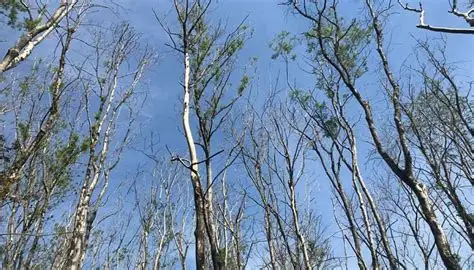Ash trees are fighting back by rapidly evolving some resistance to ash dieback disease
Ash trees are fighting back, DNA sequencing shows young trees are more likely to have gene variants that confer partial resistance to a fungus that has been wiping out ash trees across Europe.

-
That’s a remarkable amount of work hours for a single machine, the Norcar 600 owned by Erkki Rinne is taken well care of, it even has the original Diesel engine.
-
Kieran Anders is a forestry contractor working in the lake district. His work involves hand cutting and extracting timber using a skidder and tractor-trailer forwarder.
-
It is not possible to eliminate chain shot, but there are simple steps that can be taken to reduce the risk.
-
Arwel takes great pride in the fact that the mill has no waste whatsoever, “the peelings are used for children’s playgrounds, gardens and for farm animals in barns in the winter and the sawdust has multiple uses in gardens and farms as well.
-
Timber hauliers need to encourage young blood in, and also look after the hauliers we have, we need make the sector a safe and positive place to work.
FIND US ON
Related Posts
Ash trees in the UK are rapidly evolving resistance in response to ash dieback disease, DNA sequencing of hundreds of trees has shown.
The finding is good news, says Richard Buggs at the Royal Botanic Gardens, Kew, in the UK, but it is unlikely that ash trees will become completely resistant in the near future. “We probably need a breeding programme so that we can help nature along and finish the job,” he says.
Ash dieback is caused by a fungus (Hymenoscyphus fraxineus) native to Asia that slowly destroys trees’ ability to transport water. It began spreading in Europe in the 1990s and reached the UK in 2012.

The death of ash trees leads to the release of carbon dioxide and affects hundreds of species that rely on these trees for their habitat. Falling trees are also a threat to people and property. “There’s a lot of ash close to footpaths and roads that is now quite dangerous,” says Buggs.
Because the fungus takes much longer to kill large trees than young ones, Buggs’s team was able to compare the genomes of 128 adult European ash trees (Fraxinus excelsior) and 458 saplings at a site called Marden Park in Surrey. This revealed that thousands of variants his team had previously shown to be linked to resistance were more common in the young trees – probably because those that lacked them had died off.
“We are so glad that these findings suggest that ash will not go the way of the elm in Britain. Elm trees have struggled to evolve to Dutch elm disease, but ash are showing a very different dynamic because they produce an abundance of seedlings upon which natural selection can act when they are still young. Through the death of millions of ash trees, a more resistant population of ash is appearing.”
Buggs added: “Lots of textbooks about evolution have hypothetical examples of natural selection driving change in quantitative traits (for example, size and speed of wolves) but these are actually hard to prove in real life cases. Here, we provide a real example which is characterised at the DNA level.”
Contact forestmachinemagazine@mail.com to get your products and services seen on the world’s largest professional forestry online news network.
#homeoflogging #writtenbyloggersforloggers #loggingallovertheworld
Written by loggers for loggers and dedicated solely to the equipment used in forestry operations.







